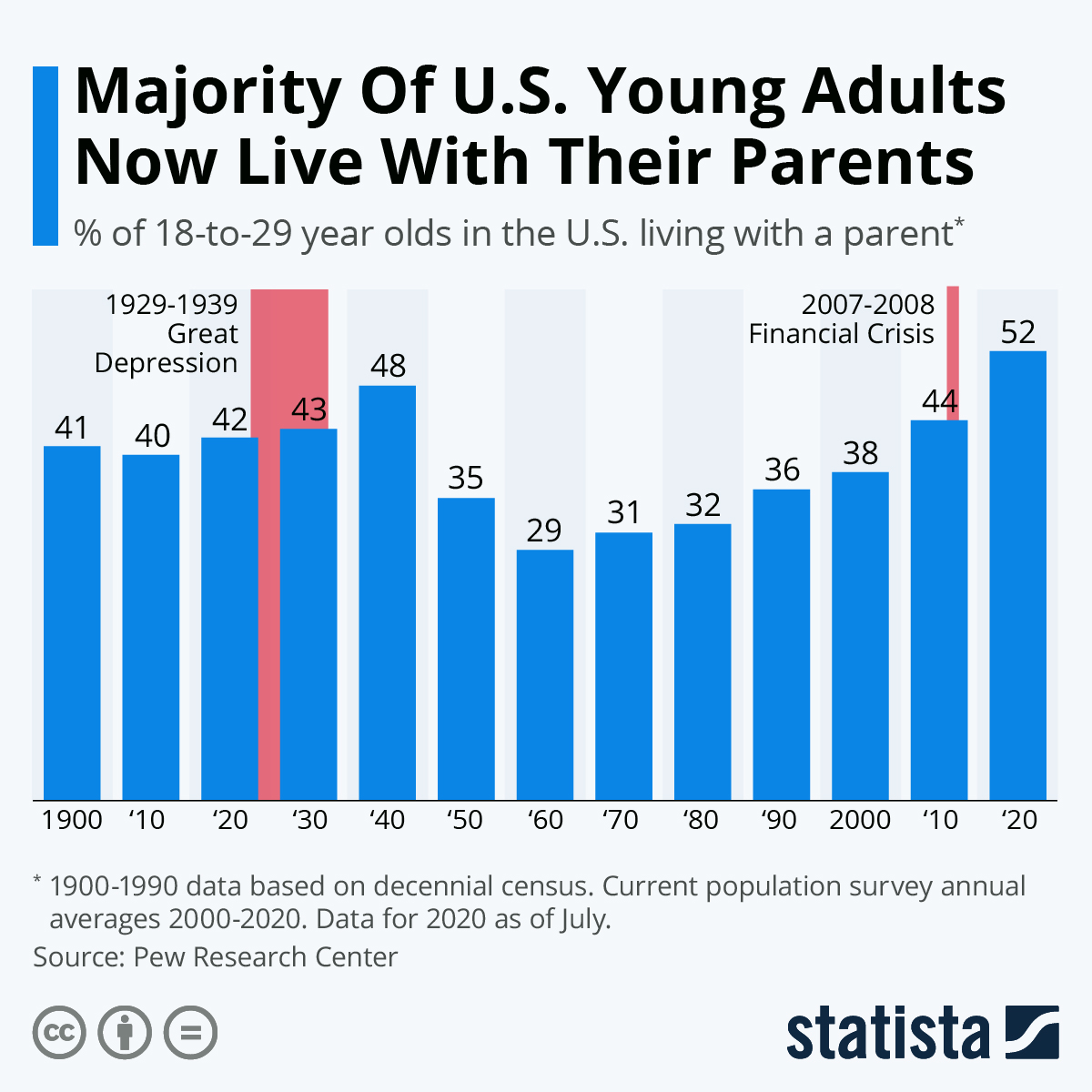The devastating economic impact of the pandemic in the United States is pushing increasing numbers of young people to move back in with their parents. A recently released Pew Research Center analysis has found that a majority of 52 percent of Americans aged between 18 and 29 now live with a parent, the highest share recorded since the Great Depression era. That figure looked set to rise even further as an estimated 30 to 40 million people across the U.S. were thought to be at risk of eviction. Now that the Centers for Disease Control and Prevention has moved to provide tenants with protection until the end of this year, the likelihood of a catastrophic homelessness crisis has subsided, temporarily at least.
The share of young adults currently living with their parents is higher than any previous measurement recorded in surveys and decennial censuses. The highest historical value was previously recorded in the 1940 census towards the end of the Great Depression when 48 percent of young adults lived with a parent. The share reached its lowest point in 1960 at 29 percent but it has grown steadily ever since, hitting 49 percent by February 2020. The Pew Research Center states that the number of 18-29-year-olds living with a parent increased by 2.6 million since February and the total number stood at 26.6 million in July.
 You will find more infographics at Statista
You will find more infographics at Statista
Over 40% Of U.S. Renters Now At Risk Of Eviction
Approximately 25 million U.S. adults will stop receiving $600 federal unemployment checks from July 31. Under new proposals by Senate Republicans, those benefits would be slashed 43 percent and replaced by a $200 weekly payment through September. That is set to have enormous financial repercussions for millions of hard-pressed Americans who have relied on the $600 payment to make ends meet during the economic havoc caused by the pandemic. If that wasn’t bad enough, the Federal Eviction Moratorium has also expired, placing renters with federally backed mortgages at risk of eviction. They account for more than a quarter of all U.S. renters.
Coronavirus: Industries with the Highest Rate of Unemployment
White House advisor Larry Kudlow did hint at an extension of the provision during an interview on Sunday but its expiration has allowed landlords to file eviction notices, though people cannot be pushed out of their homes for another 30 days at least. Together with the cut in unemployment benefits, a perfect storm is on the horizon for America’s renters. An analysis from global advisory firm Stout Risius Ross estimates that over 40 percent of renter households across the country will experience a rental shortfall during the current crisis with close to 12 million people facing eviction over the coming four months alone. 17 million are set to be impacted over the course of the pandemic.
The analysis is based on Household Pulse Data from the middle of July and it found that the situation differs significantly between states. West Virginia has the highest estimated share of renter households facing eviction at nearly 60 percent while Tennessee, Minnesota, Mississippi, Florida and Louisiana are all at 50 percent or higher. The lowest risk of eviction is in Vermont where 22 percent of people could lose their homes.



